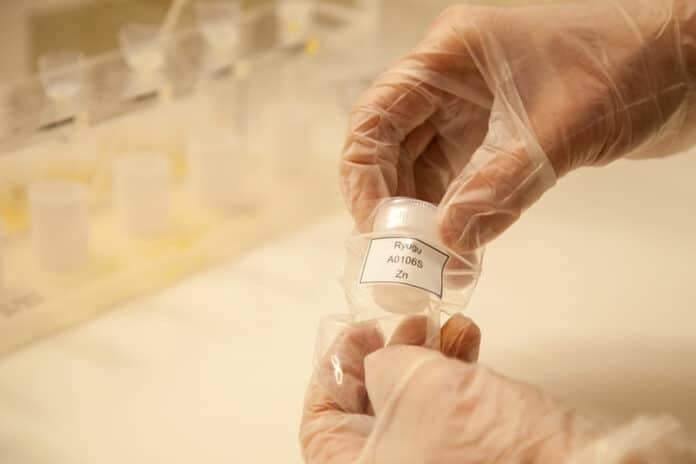Initial analyses showed that asteroid Ryugu’s composition is close to CI (Ivuna-like) carbonaceous chondrites (CCs) – the chemically most primitive meteorites, characterized by near-solar abundances for most elements. However, some isotopic signatures (for example, Ti, Cr) overlap with other CC groups, so the details of the link between Ryugu and the CI chondrites are not yet fully clear.
Nearly two years after the Japanese spacecraft Hayabusa2 made its way back to Earth, samples from the asteroid Ryugu still provide essential insights into the early solar system’s past. The isotopic composition of the zinc and copper in the asteroid Ryugu has been determined by scientists from the Institut de Physique du Globe de Paris, Université Paris Cité, and CNRS1 as part of an international collaboration.
The isotopic signatures show that Ryugu’s composition is close to Ivuna-like carbonaceous chondrites and that Ryugu-like material from the outer solar system accounts for ~5-6% of Earth’s mass.
Two moderately volatile metals, zinc and copper are essential for understanding volatile accretion processes during telluric planets’ formation. The varied zinc and copper isotopic compositions of the various groups of carbonaceous chondrites can be seen, with the CI chondrites being the most abundant in volatile elements. Additional analyses of Ryugu’s zinc and copper isotope composition provided the scientists with a vital resource for understanding the asteroid’s formation.
The scientists showed that the isotopic ratios of copper and zinc in the samples from Ryugu were identical to CI chondrites but different from all other types of meteorites. This study confirms that these early samples from Ryugu constitute the greatest estimate of the solar composition for copper and zinc by conclusively demonstrating the similarities between Ryugu and CI chondrites.
Finally, the development of planetary habitability can be understood by studying the accretion history of moderately volatile elements on Earth using the zinc isotopic composition of Ryugu. The study also shows that roughly 5% of the Earth’s mass comes from material similar to Ryugu.
Journal Reference:
- Paquet, M., Moynier, F., Yokoyama, T. et al. Contribution of Ryugu-like material to Earth’s volatile inventory by Cu and Zn isotopic analysis. Nat Astron (2022). DOI: 10.1038/s41550-022-01846-1
